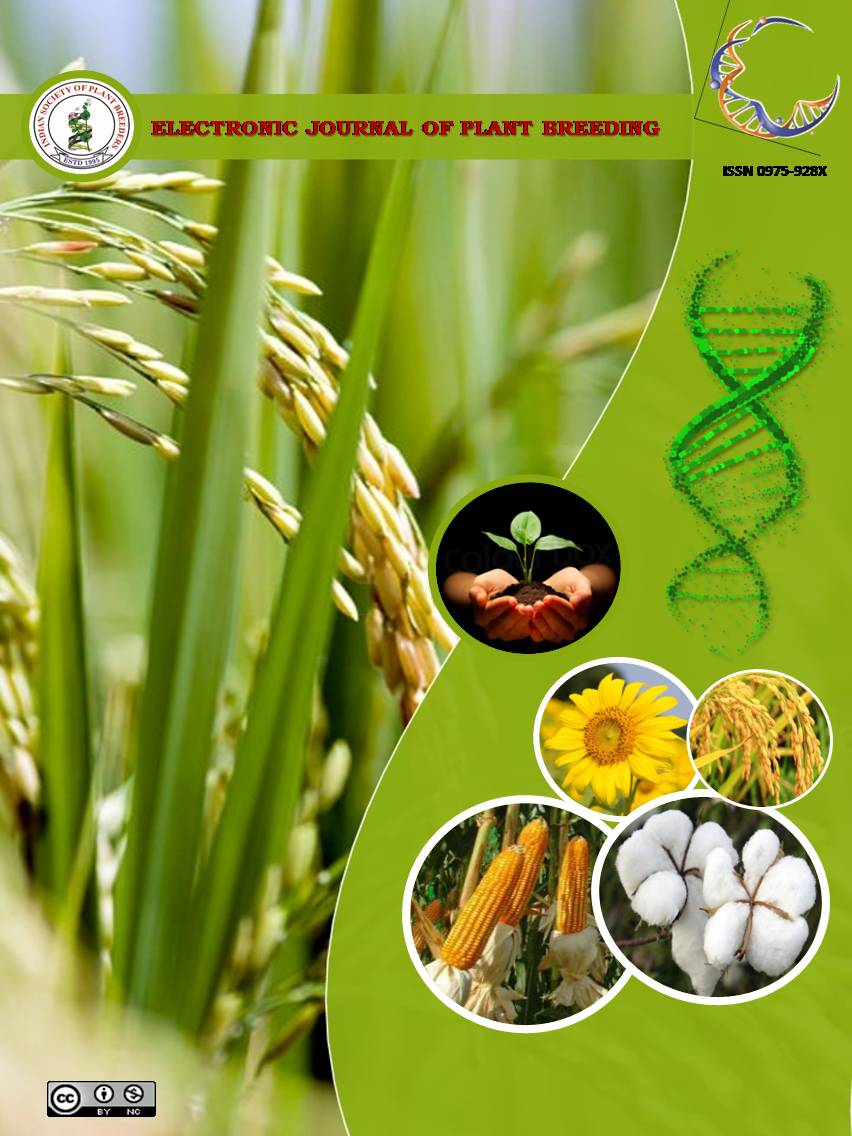Evaluation of Near Isogenic Lines (NILs) of rice for major abiotic stresses of coastal areas
Abstract
Rice crop in coastal areas is very often subjected to major abiotic stresses like submergence, lodging of the crop caused by heavy rains or cyclones and salinity. Identification of genotypes tolerance to multiple abiotic stresses is needed to sustain under climate changed conditions. NILs of Pushyami (MTU 2336-62-25-38-16, MTU 2336-70-46-25-44) with Sub1 locus expressed tolerance to flash floods and also stagnant flooding and lodging resistance. NILs of Amara (MTU 2244-119-59-63-40, MTU 2244-119-83-65, MTU 2244-39-10-44-1) having sub1 expressed tolerance to stagnant flooding, lodging resistance and moderate tolerance to salinity along with targeted trait of flash flood tolerance. NILs of Swarna (MTU 2546A-13-1-6-1, MTU 2546A-12-18-1, MTU 2546A-34-1-9-1) expressed moderate tolerance to anaerobic germination along with its targeted lodging related traits. NILs of Cottondora sannalu (DST 8-162-4, DST 9-157-7, DST 8-4-4) expressed lodging, flash flood, anaerobic germination along with targeted trait of seedling stage salinity tolerance. The results showed that NILs possessing multiple abiotic stress tolerance would sustain even under climate changed conditions.

It is certified that:
- The corresponding author is fully responsible for any disputes arising due to the publication of his/her manuscript.
- The article has been seen by all the authors who are satisfied with its form and content.
- The sequence of names of authors in the by-line is as per their relative contribution to this experiment, giving due credit to all scientists who made notable contribution to it.
- All the authors fully understand that inclusion of any other co-authors or exclusion of any co-authors is not possible once the article has been submitted to the journal.
- The corresponding author takes full responsibility for this article.
- The address of the organization where the research was conducted is given.
- The article is exclusive for this journal, and the results reported here have not been sent (and will not be sent during its consideration by this journal) for publication in any other journal.
- Authors agree to abide by the objective comments of referees and do agree to modify the article into a short note as per the recommendation, for publication in the Electronic Journal of Plant Breeding.
- If published in Electronic Journal of Plant Breeding, the copyright of this article would vest with the Indian Society of Plant Breeders, who will have the right to enter into any agreement with any organization in India or abroad engaged in reprography, photocopying, storage and dissemination of information contained in it, and neither we nor our legal heirs will have any claims on royalty.


